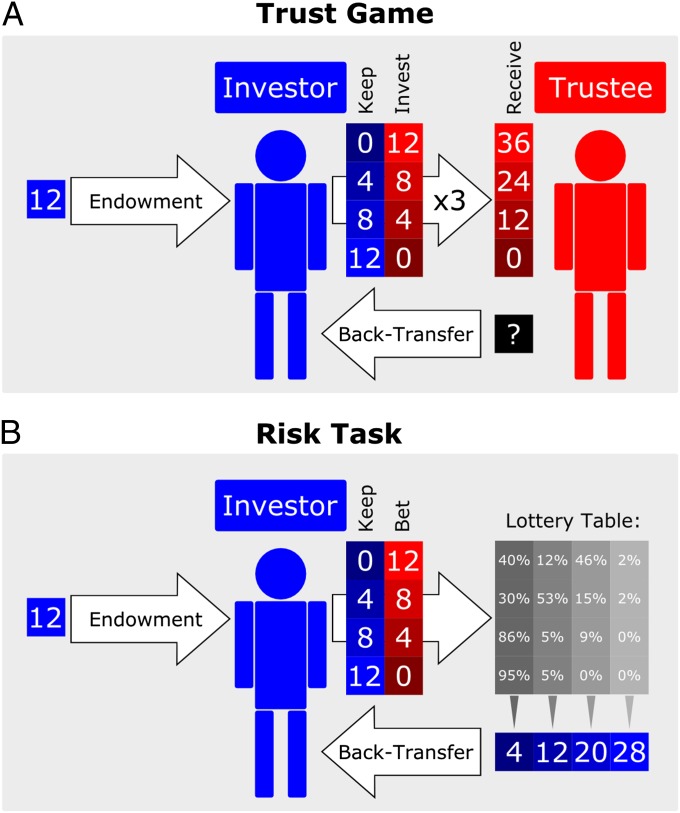Fig. 2.
(A) Trust game. The investor and the trustee both received an endowment of 12 ZAR, and the investor decided how much of this endowment to send to the trustee. The amount sent was then multiplied by the factor of three, and the trustee decided how much of the money received to send back to the investor. Subjects played five single rounds in which the investor was only informed about the back-transfer at the end of the game. (B) Risk task. The trustee was replaced by a random mechanism in the form of four distinct lotteries. All four lotteries were wheel-of-fortune–type lotteries whose winning probabilities and outcomes approximated the risk associated with investor risk in the trust game. Subjects had to buy a total of five lottery tickets with different prices for the tickets corresponding to four different types of lotteries. Ticket prices corresponded directly to the transfer the investor could make in the trust game.

